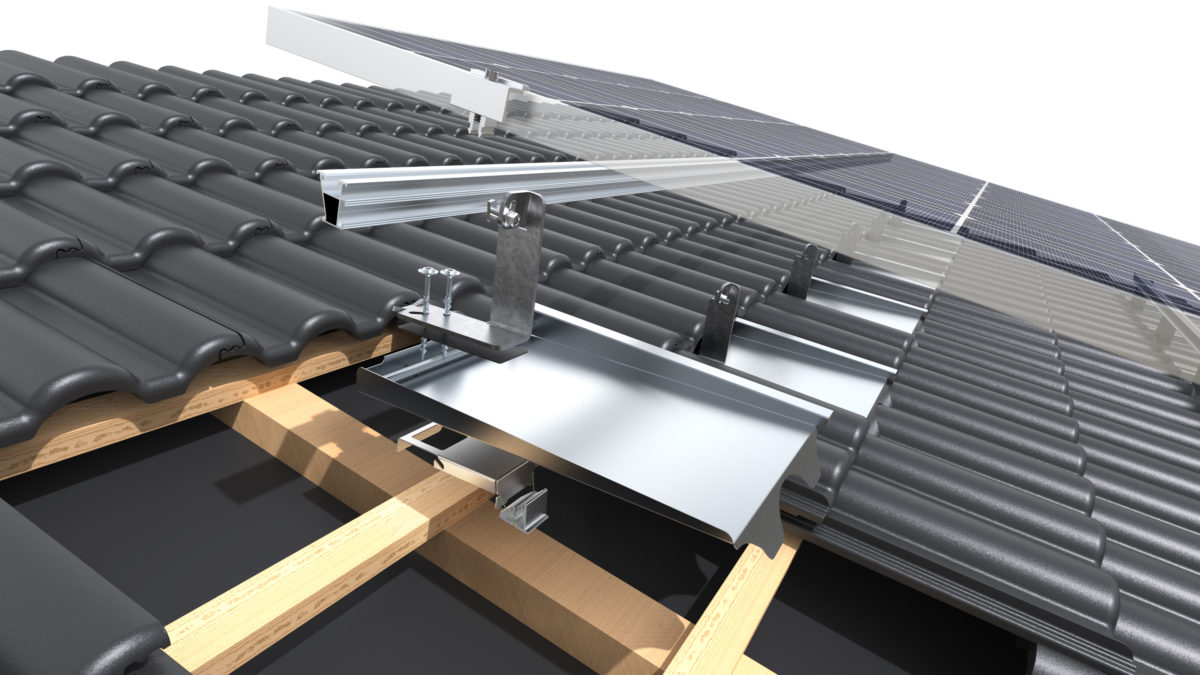Aerocompact, an Austrian mounting systems supplier, has developed a new roof hook system with a sheet metal replacement tile that can be used for PV systems that have to withstand significant snow loads.
The XM-P system was designed to be used on all batten heights on pitched tiled roofs and is claimed to eliminate the need for different types of roof hooks. Aerocompact claims it can withstand snow loads of up to 4.7 kN.
The device is based on a heavy-duty stainless steel bracket that can be positioned directly in the direction of force on a purlin.
“It can be screwed through the metal roof tiles into the rafters below with two wood screws,” the manufacturer said. “The roof hook can be moved on the pantile, allowing it to be optimally positioned above the rafter.”
Popular content

Image: Aerocompact
The forces of the hook are transferred into the rafter via a suspended support. The company said this can be adjusted to the height of the roof batten without needing any tools. Maximum stability should be ensured by applying to load to the substructure in the shortest possible path.
“With the help of our XM-P roof hook system, several work steps can be saved during installation. Installers do not need, for example, angle grinders to process or prepare the tiles on the roof because Aerocompact can provide stainless steel replacement roof tiles made of sheet metal for almost all standard roof tiles on the market,” said CEO Christian Ganahl.
The new product can be used with the company's own X40/X50 mounting rails and comes with a 25-year warranty.
This content is protected by copyright and may not be reused. If you want to cooperate with us and would like to reuse some of our content, please contact: editors@pv-magazine.com.



3 comments
By submitting this form you agree to pv magazine using your data for the purposes of publishing your comment.
Your personal data will only be disclosed or otherwise transmitted to third parties for the purposes of spam filtering or if this is necessary for technical maintenance of the website. Any other transfer to third parties will not take place unless this is justified on the basis of applicable data protection regulations or if pv magazine is legally obliged to do so.
You may revoke this consent at any time with effect for the future, in which case your personal data will be deleted immediately. Otherwise, your data will be deleted if pv magazine has processed your request or the purpose of data storage is fulfilled.
Further information on data privacy can be found in our Data Protection Policy.